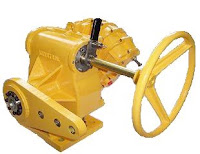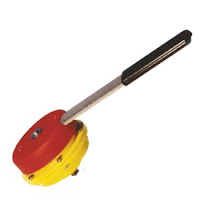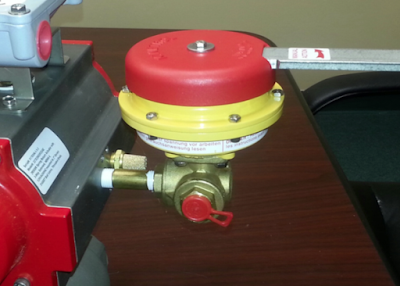 |
| Pneumatic damper drives |
Pneumatic damper drives significantly improve the reliability, precision, and efficiency of industrial boilers and furnaces. Accurate control of combustion air and flue gas provide many cost savings benefits to plant operators. A pneumatic damper drive’s precision and rapid response greatly improve fuel efficiency, reduce emissions, lower fuel consumption, and provide better boiler draft control.
Recent “
Boiler MACT” (Boiler Maximum Achievable Control Technology) regulations require regular maintenance to optimize boiler performance. Air-to-fuel mixing and CO emissions are two areas where fine tuning and precise control yields dramatic improvement in burn efficiency. Old electric drives do not provide the precision, speed or torque needed for accurate control, so a retrofitting program that replaces electric drives with pneumatic units is an easy way to improve efficiency and gain better performance.
In the application outlined below, several dual-arm damper drives, using
Kinetrol Model 18 actuators, were specified to replace aging Bailey electric damper drives in a power plant in the southwest USA. These specific drives are used to control the desuperheater and reheater temperature at a gas fired plant. Not only was there a need for optimized performance for better fuel consumption and lower emissions, but the customer was also very concerned about reliability. The plant needed to know the new Kinetrol-based damper drives were immediately available, and ready for drop-in replacement as the Bailey drives failed. This was easily managed by designing pedestals and frames that matched the bolting patterns and envelope size of the existing Bailey units. The Kinetrol drives were designed to match the legacy footprint exactly, have the drive shaft and drive lever in the exact position, and provide a drive shaft and lever with the same dimensions as the Bailey drive.
The result is a high duty cycle, highly precise, long-life, fast acting, responsive, easily maintained, and easily automated damper drive.









